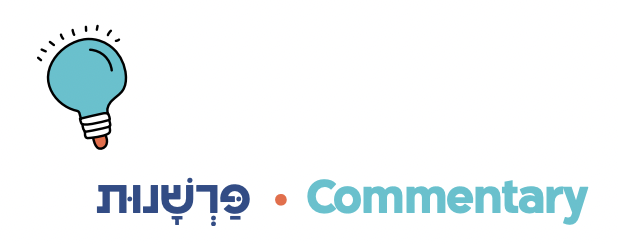Illustration Credit: Elad Lifshitz, Dov Abramson Studio

Commentary פַּרְשָׁנוּת
If you saw signs of a נֶגַע (nega, wound) on your house, it might be צָרַעַת (tzara’at). You’d need to consult your local כֹּהֵן (kohen, priest):
וּבָא֙ אֲשֶׁר־ל֣וֹ הַבַּ֔יִת וְהִגִּ֥יד לַכֹּהֵ֖ן לֵאמֹ֑ר כְּנֶ֕גַע נִרְאָ֥ה לִ֖י בַּבָּֽיִת׃
The owner of the house shall come and tell the kohen, “something like a nega has appeared on my house.”
Our פַּרְשָׁנִים (parshanim, commentators) notice that, when speaking to the kohen, the homeowner uses tentative language: “hmmm, this sort of seems like a nega.” Why?
שֶׁאֲפִלּוּ הוּא חָכָם וְיוֹדֵעַ שֶׁהוּא נֶגַע וַדַּאי, לֹא יִפְסֹק דָּבָר בָּרוּר לוֹמַר "נֶגַע נִרְאָה לִי", אֶלָּא "כְּנֶגַע נִרְאָה לִי."
Even a wise person who knows that it’s definitely a nega, shouldn’t speak with certainty, saying “I saw a nega,” but rather: “I saw something like a nega.”
- Rashi is teaching a life lesson in politeness. Can you think of times when it’s better to ask about something without assuming you know the answer, even when you’re pretty certain you do?
דְּהָא כָּל זְמַן שֶׁלֹּא נִזְקָק לוֹ הַכֹּהֵן לָאו נֶגַע הוּא,
וְאֵיךְ יֹאמַר ׳נֶגַע נִרְאָה לִי בַּבָּיִת׳?
As long as the kohen hasn’t seen it, it’s not a nega. So how can a person say, “I saw a nega in the house”?
Maharal makes a really important point about tzara’at. You can’t diagnose your own tzara’at, because it’s not actually tzara’at until the kohen says so! When the person says, “something like a nega,” they aren’t just being polite; they’re speaking the truth—it’s really not a nega until the kohen says it is.
- Other diseases don’t work like this—a person can be sick whether or not a doctor says so! What does this difference teach us about tzara’at? Why might the kohen’s decision be necessary for the nega to officially become tzara’at?
-------------------
-------------------





